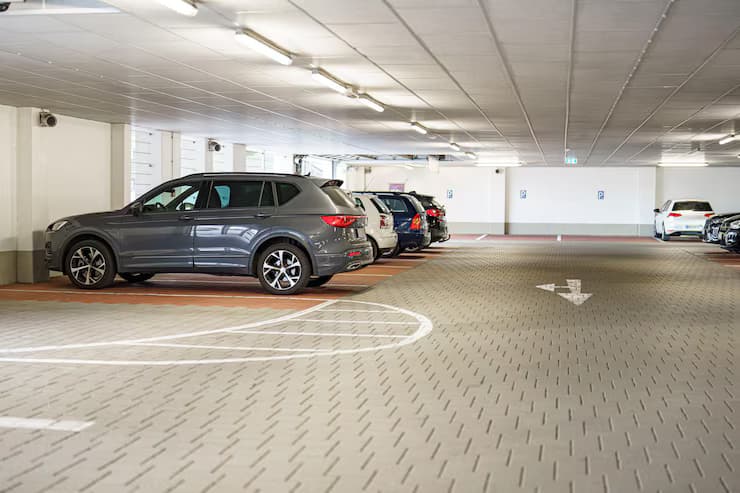Car Park Design Standards You Need to Know

Strong 8k brings an ultra-HD IPTV experience to your living room and your pocket.
The design of a car park is a critical component of urban planning and civil engineering. An effective car park design ensures not only the efficient use of space but also the safety and convenience of its users. As cities expand and the number of vehicles on the road continues to rise, understanding the standards and principles that govern car park design has become increasingly important. This article explores the essential car park design standards that professionals in the field must know, ensuring that their projects meet both regulatory requirements and user expectations.
Understanding the Importance of Car Park Design
Car parks serve as essential infrastructure in urban environments, providing a necessary service for residents, businesses, and visitors. A well-designed car park can enhance traffic flow, reduce congestion, and improve the overall experience for drivers. Conversely, poor car park design can lead to a host of problems, including inefficient use of space, increased traffic congestion, and safety hazards.
The importance of adhering to established car park design standards cannot be overstated. These standards help create functional, safe, and accessible parking facilities that cater to various users, including those with disabilities. Moreover, with the growing emphasis on sustainability, modern car park designs often incorporate eco-friendly practices, such as permeable paving and green spaces, which contribute to environmental conservation.
Key Car Park Design Standards
1. Dimensions and Layout
One of the fundamental aspects of car park design is the dimensions and layout of parking spaces. Standard parking space dimensions typically range from 2.4 to 2.7 meters in width and 4.5 to 5.0 meters in length, depending on local regulations and the types of vehicles anticipated. Additionally, the layout must accommodate various vehicle types, including standard cars, larger SUVs, and accessible vehicles for individuals with disabilities.
Efficient circulation within the car park is crucial for minimizing congestion and enhancing user experience. A well-planned layout should include sufficient aisle widths, which typically range from 6 to 7.5 meters for two-way traffic. Properly designed circulation patterns minimize the need for drivers to perform complex maneuvers and reduce the likelihood of accidents.
2. Accessibility Standards
Accessibility is a vital consideration in car park design. The Americans with Disabilities Act (ADA) outlines specific requirements for accessible parking spaces, including the number of designated spaces required based on the total number of parking spots. For example, a parking facility with 1 to 25 spaces must have at least one accessible space, while larger facilities must provide additional spaces in accordance with ADA guidelines.
Accessible parking spaces should be located as close as possible to building entrances to minimize the distance for users with mobility impairments. Furthermore, these spaces must be clearly marked with appropriate signage and painted markings to ensure visibility. The design should also include features such as curb ramps and accessible pathways to facilitate safe access to the building.
3. Safety and Security Considerations
Safety and security are paramount in car park design. The layout should promote visibility and natural surveillance, minimizing hidden areas where potential criminal activity could occur. This can be achieved through strategic placement of lighting, landscaping, and clear sightlines throughout the facility.
Lighting is a critical component of safety in car parks. Adequate illumination not only enhances visibility for drivers and pedestrians but also deters criminal activity. The design should incorporate well-placed lighting fixtures to ensure that all areas of the car park are sufficiently lit, particularly entry and exit points, as well as pedestrian walkways.
In addition to lighting, security measures such as surveillance cameras and emergency call boxes can further enhance the safety of car parks. These features provide users with a sense of security and promote a safer environment for everyone.
4. Environmental Considerations
With the increasing focus on sustainability, modern car park designs are incorporating environmentally friendly practices. This includes the use of permeable paving materials, which allow rainwater to infiltrate into the ground, reducing stormwater runoff and promoting groundwater recharge. Incorporating green spaces, such as trees and landscaping, can also improve air quality and provide shade for parked vehicles.
Additionally, the integration of electric vehicle (EV) charging stations is becoming a standard practice in car park design. As the demand for electric vehicles continues to grow, providing adequate charging infrastructure is essential for accommodating this trend. Car parks should be designed to include designated EV charging spaces, which not only support sustainability initiatives but also enhance the attractiveness of the facility to eco-conscious users.
5. Traffic Flow and Management
Efficient traffic flow within the car park is crucial for enhancing the user experience and minimizing congestion. Designers should consider the placement of entry and exit points to facilitate smooth traffic movement. Ideally, these points should be strategically located to minimize conflicts with surrounding roadways and ensure safe access for vehicles entering and exiting the facility.
Additionally, clear signage is essential for guiding drivers throughout the car park. Informative signs should indicate available spaces, direct traffic flow, and provide essential information about parking regulations. Implementing a user-friendly wayfinding system can significantly reduce confusion and enhance the overall experience for drivers.
Conclusion
In the realm of civil engineering and urban planning, understanding car park design standards is essential for creating functional, safe, and environmentally friendly parking facilities. By adhering to established guidelines related to dimensions, accessibility, safety, environmental impact, and traffic management, professionals can ensure that their designs meet the needs of the community while enhancing the overall user experience.
As cities continue to evolve and adapt to the increasing number of vehicles on the road, the importance of effective car park design will only grow. For those seeking expert guidance in this field, consider reaching out to Onn Point Civil Engineering. Their team of experienced professionals is dedicated to delivering innovative and sustainable car park designs that meet the highest standards. Contact them today to discover how they can assist you in your next project!
Note: IndiBlogHub features both user-submitted and editorial content. We do not verify third-party contributions. Read our Disclaimer and Privacy Policyfor details.


